
Reseresa Skottland
Allt om Skottland
Sevärdheter Golfaktiviteter

South Street St Andrews
South Street is where you will find St Mary's Quad
and the Gregory meridian. The oldest part of the University
and the town gate (west port). Madras College Blackfriars Chapel ruins, the Town Hall and many other historic sites.
Västra hamnen
Södra gatan St Andrews Skottland
West Port byggdes cirka 1580 och är den enda porten i sitt ursprungliga läge kvar i Skottland. Det verkar inte vara en del av en stadsmur som skulle ha stängts i händelse av invasion av engelsmännen. Porten renoverades omfattande 1843. Ovanför mitten av bågen finns St Andrews Coat of Arms


Gavin Douglas 1474 - 1522
Gavin Douglas föddes i Tantallon Castle East Lothian.
Han var 3:e son till Archibald "Bell the Cat" Douglas 5th Earl of Angus. och hade ett hus nära denna plats. En student vid St Andrews University, han var en poet känd för sin "Palice of Honour" och för hans "Eneados" en översättning av Virgils "Aeneid" till skotska. Han var dekanus i St Giles Edinburgh 1501 biskop av Dunkeld 1515. Död 1522 i London av pesten. Hans vapen var en gång ovanför plaketten, se nedan hur det såg ut.

Madras College
South Street St Andrews
Madras College first opened in 1833 and takes its name from founder the Rev. Dr Andrew Bell and the educational system he devised.
see his plaque beside Blackfriars Chapel.

Blackfriars kapell


Blackfriars Chapel byggdes 1525 och skadades av brand 1547 och förstördes 1559 av en protestant under reformationen. Strukturen på South Street är allt som återstår.
Charles Lapworth Plaque
South Street St Andrews
Charles Lapworth was a teacher at Madras College 1875 – 1881.
A self-taught Geologist was the founder of a new geological time (The Ordovician Period)
He became a Professor of Geology in 1881 at Birmingham University.
Plaque Reads:
CHARLES LAPWORTH, LLD, FRS, 1842-1920
Between 1875 and 1881 Lapworth was a teacher of English at Madras College. In his spare time he studied the Rocks of extinct creatures called Graptolites to help unravel the complexities of these ancient rocks. As a result of his careful studies, he proposed anew division of geological time, The Ordovician Period that is now recognised and used internationally. He also correctly interpreted the Moine Thrust Fault Zone in the North West Highlands of Scotland as amass of older rocks pushed over younger ones, an idea which at the time conflicted with orthodoxy. He left St Andrews in 1881 to become Professor of Geology at the University of Birmingham.

Dr Andrew Bell Plaque
South Street St Andrews
Dr Bell was born in South Street St Andrews in 1753
he died in 1832. Son of Bailie Bell, Andrew was Founder of the Madras College in 1833 he pioneered
the Madras System of Education.
Teaching system which went worldwide,
where older children taught younger children.
Plaque reads:
The Reverend Dr Andrew Bell 1753 – 1832
An educational reformer and philanthropist. He was born in
St Andrews. It was while serving in Madras in India that he developed a form of schooling where
the older pupils taught the younger.
When he returned he introduced his “Madras” or monitorial system as an economical form of mass education. The idea spread, Madras Schools appearing in Canada and Australia. Among the other local benefactions was the Bell fund for the benefit of St Andrews. He ended his career as Prebendary of Westminster Abbey. Where he is buried.

Dr John Adamsons hus


Dr John Adamson 1809 - 1870 bodde här 1845 - 1865
Han var läkare och pionjärfotograf.
1841 också han det första kalotypporträttet.
Han lärde också sin bror Robert och Thomas Rodger tekniken och konsten att fotografera.
Holy Trinity Church
South Street St Andrews
The Holy Trinity Church originally stood close to St Andrews Cathedral
and was built in 1144.
It has been in its present position in South Street since 1412.
Originally served by Roman Catholic priests
it changed with the Reformation in 1559
to Protestant and Episcopalian priests.
Since 1689 the ministers have been Presbyterian.
The Tower and two interior arches are the only original parts of the church from 1412 that remain.
1907 the church was demolished and rebuilt to the previous medieval church’s footprint and rededicated on St Andrews Day in 1909.

The Sharp Aisle
The Sharp Aisle, contains the tomb and monument to Archbishop Sharp (1618-1697),
Sharpe was murdered by Covenanters at Magus Muir 1697.
The Great East Window
Dated from 1910
The Good Physician
Dated from 1890 is the only surviving window prior to the reconstruction of the church in 1909.
John Knox Porch
In 1547 Holy Trinity was the scene of the first public sermon
of the famous reformer, John Knox.
He also preached in Holy Trinity in 1559, instructing residents of St Andrews to purge the city of "monuments of idolatry". Inspired by Knox's the local population rejected Catholicism, tore down statues and altars, and sacked St Andrews Cathedral.

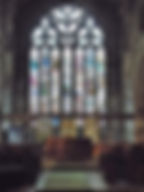
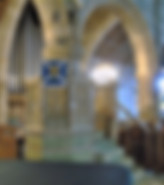
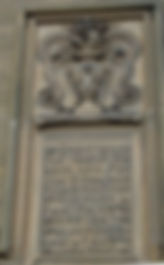
St Andrews rådhus
Queens Gardens
St Andrews
KY16 9TA
Skottland

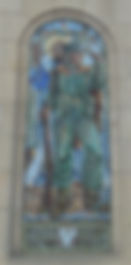
St Andrews Town Hall byggdes 1858 för kommunala och offentliga ändamål
Sir Hugh Playfair Provost.
Den polska soldaten St Andrews Memorial
Robert Burns Club Plaque
South Street St Andrews
St Andrews Burns Club Plaque
Can be found on what was the Royal Hotel where the club was founded
on 25th January 1869.
13 in the Robert Burns World Federation
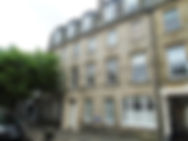


Hamish McHamish-statyn
Logies Lane
St Andrews
KY16 9NL
Skottland

Hamish McHamish var en ingefärskatt (15 år) som bodde i St Andrews Skottland.
Han blev en internationell stjärna när en bok med titeln Hamish McHamish of St Andrews: Cool Cat About Town publicerades. Hamish en stjärna i sociala medier med sin egen Facebooksida https://www.facebook.com/HamishMcHamishOfStAndrews och Twitterkonto @Hamish_McHamish. En nomadkatt som togs om hand av många av invånarna i St Andrews. En gång ägd av Marianne Baird.
Bailie Bell's House and Foundry
South Street St Andrews

In 1620 Edward Raban came to
St Andrews and set up a printing press in a building on the corner of North Street and Church Street.
This was later demolished by Bailie Bell in 1740 so he could build his house. This house is where his son was born in 1753 (Andrew). Andrew was to found Madras College and the "monitorial system" of education.
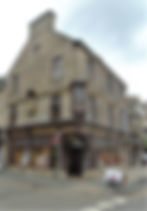
Royal Coat of Arms Tablet
South Street St Andrews
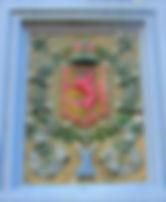
George Martine av Claremont
George Martine av Claremont 1635 -1712
Bodde på South Street Han var en advokatkommissarie i St Andrews och författare till ärkebiskopsrådets första historia: - "Reliquiae Divi Andreae"

George Martine FRS 1700 - 1741
George var en läkare, kirurg och geolog, som senare bodde på 56 South Street. Han var den första som gjorde en noggrann studie av värme och temperaturskalor, och gjorde den första uppskattningen -400F, av den absoluta nolltemperaturen, Han gjorde den första användbara kliniska termometern för kvicksilver i glas. Här var 1730 han utförde den första trakeotomi i Storbritannien
James David Forbes House
South Street St Andrews
James David Forbes was born in Edinburgh 20 April 1809
at 86 George Street.
He was educated at Edinburgh University in 1825. At 19, became a fellow of the Royal Society of Edinburgh, and in 1832
he was elected to the
Royal Society of London.
In 1859 he was appointed successor to David Brewster as principal of the United College of St Andrews, which he held until his death in 1868. It could be said he was first to study the heating of the earth.


James Boswell och Samuel Johnson
Detta är platsen för Glass Inn 29 South Street där Boswell och Dr Johnson åt kvällsmat den 18 augusti 1773.
Vi hade en trist bilresa i en mörk natt till St Andrews där vi kom sent. Vi hittade en god middag på Glass's Inn.
Glass Inn överlevde cirka 1830

St Andrews
Sevärdheter
St Andrews Cathedral
The Pends
St Andrews
KY16 9QL
Skottland
St Andrews Castle
Poängen
St Andrews
KY16 9AR
Skottland
Holy Trinity Church
St Mary's Places
St Andrews
KY16 9UY
Skottland
Västhamnen
South Street
St Andrews
KY16 9EG
Skottland
Hamish McHamish -staty
Logies Lane
St Andrews
KY16 9NL
Skottland
Blackfriars Chapel
Madras hus
South Street
St Andrews
KY16 9EH
Skottland
Biskop Wardlaw -statyn
S: t Marias fyrkant
St Andrews
Skottland
Kingsbarns församlingskyrka
Huvudgata
Kingsbarns
St Andrews
KY16 8SS
Skottland
St Andrews stadshus
Queens Gardens
St Andrews
KY16 9TA
Skottland
Tom Morris Grave
The Pends
St Andrews
KY16 9RG
St Rules Tower
St Andrews
KY16 9QZ
Bell Pettigrew Museum
Bute medicinska byggnader
Skolan för biologi
Queen's Terrace
St Andrews
KY16 9TS
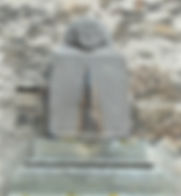
James Gregorys
Meridianlinjen
Södra gatan St Andrews Skottland James Gregory var förste regiusprofessor i matematik.
Han lade en meridian 1748. Han och två andra var grundarna av kalkyl.
Han uppfann det gregorianska teleskopet För en mer djupgående titt på Gregorys arbete gå till


